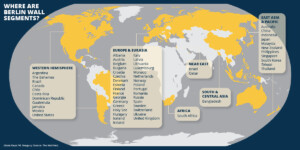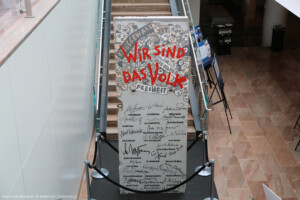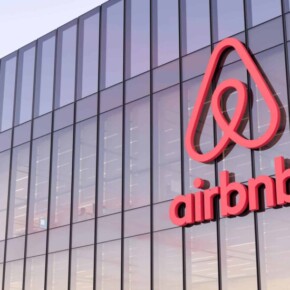Remnants of the Berlin Wall — where are they now?
Dublin People 03 Dec 2024
By Lenore T. Adkins
The Berlin Wall stood for three decades separating western, democratic areas of Berlin from eastern, communist areas.
The separation of Berlin was agreed to by the Allies after World War II.
The wall, built much later to halt the massive emigration of Germans from the communist East to the democratic West, became a divisive symbol of the Cold War before it was knocked down in 1989.
In the 35 years since the wall was dismantled, pieces of its once-imposing concrete structure have made their way around the world.

Fragments of the once 5-meter-high, 165-kilometer-long wall are found not just in Germany, but in dozens of other places, including Australia, Brazil, Japan, Mexico, Qatar, Russia, Singapore, South Africa and the United States, according to The Wall Net , a digital project that tracks the wall’s fragments all around the world.
The fragments are prized by history buffs and lovers of democracy.
Elizabeth Della Zazzera, a professor at the University of Connecticut, has written about how the fragments circulate .
Some pieces were given as gifts or donated to museums.
German people were given the primary role in dismantling the wall.
But British troops, who helped them to raze it, were allowed to take pieces to British military museums
People also bought pieces of the wall.
In 1990, East Germany’s Ministry of Foreign Trade gave an import-export company a licensing agreement to sell segments of the wall — 1.2-meter-wide segments fetched between $60,000 and $200,000.
Buyers were mostly interested in graffiti- and art-covered pieces from the wall’s west-facing side.
Eventually, after German reunification, wall segments declined in value, and much of the undecorated concrete wound up in roads and other public works projects.
Today, the National Museum of American Diplomacy at the U.S. Department of State is home to a 4-meter high piece signed by 27 leaders who played roles in bringing down the wall and advancing German reunification.

A sculpture of horses jumping over remnants of the Berlin Wall sits outside the George H.W. Bush Library on the Texas A&M University campus in College Station, Texas. (AP Photo/Pat Sullivan)
They include the late U.S. President George H.W. Bush, former U.S. Secretary of State James Baker, the late German Chancellor Helmut Kohl, former Soviet Premier Mikhail Gorbachev and Polish labor union leader and Nobel Peace Prize laureate Lech Walesa.
Leipzig artist Michael Fischer-Art painted this segment, depicting protesters during that city’s demonstrations in 1988–89.
Fischer-Art had created many of the banners protesters carried as they chanted, “Wir sind das Volk” (“We are the People”), “Freiheit” (“Freedom”) and other pro-democracy messages.
The Senate of Berlin kept a cache of 30 wall segments to hand out to various countries’ leaders during state visits.
“Separated into its constituent pieces, divided into fragments, the wall ceases to be an impediment and instead serves as a reminder of division and reunification, of conflict and resolution, of constraint and liberty,” Della Zazzera writes.
“In each case, this potent symbol when removed to a different context absorbs new meaning from its adopted surroundings.”

The “Signature Segment” of the Berlin Wall is on display at the State Department. (National Museum of American Diplomacy)











